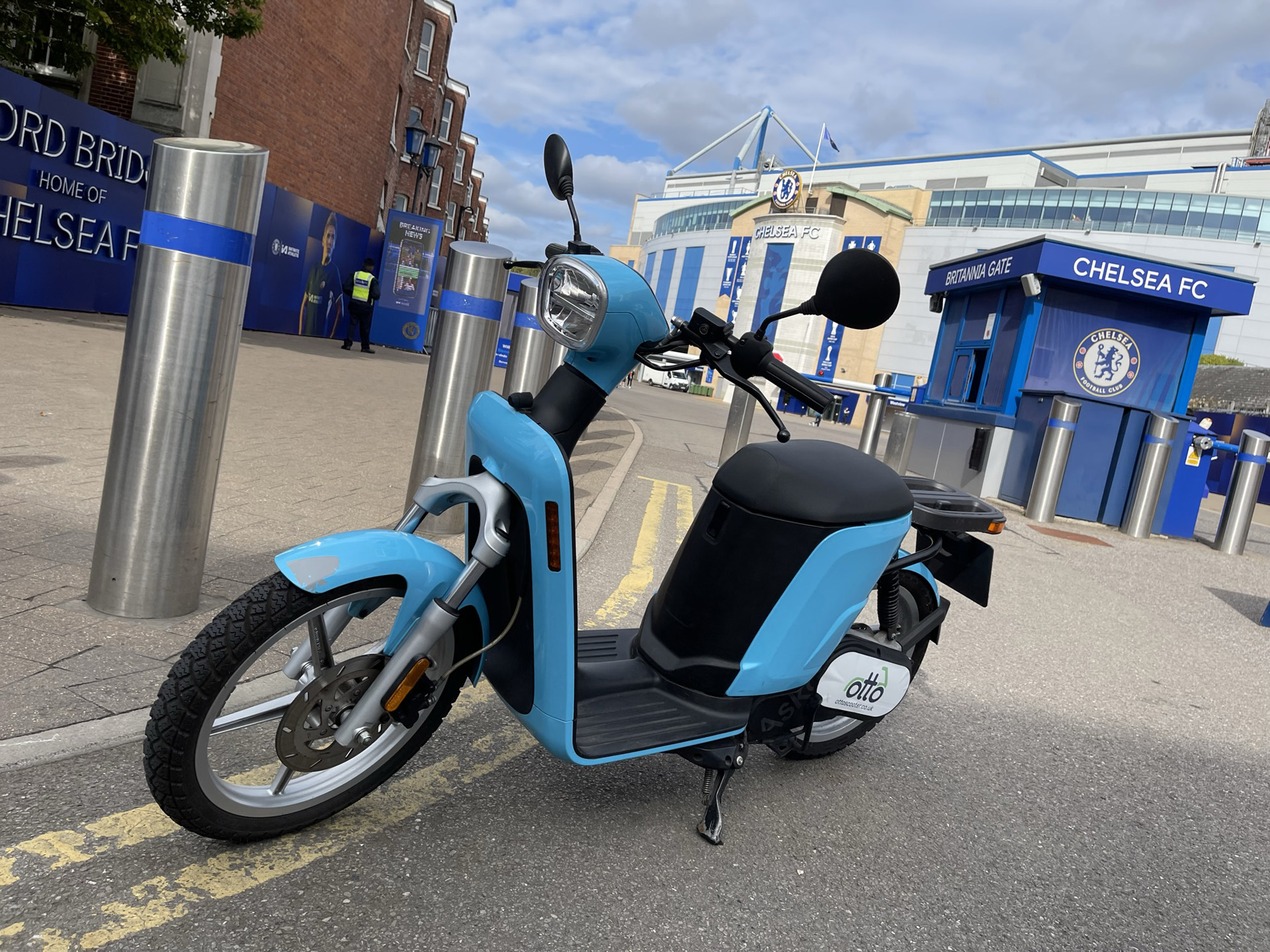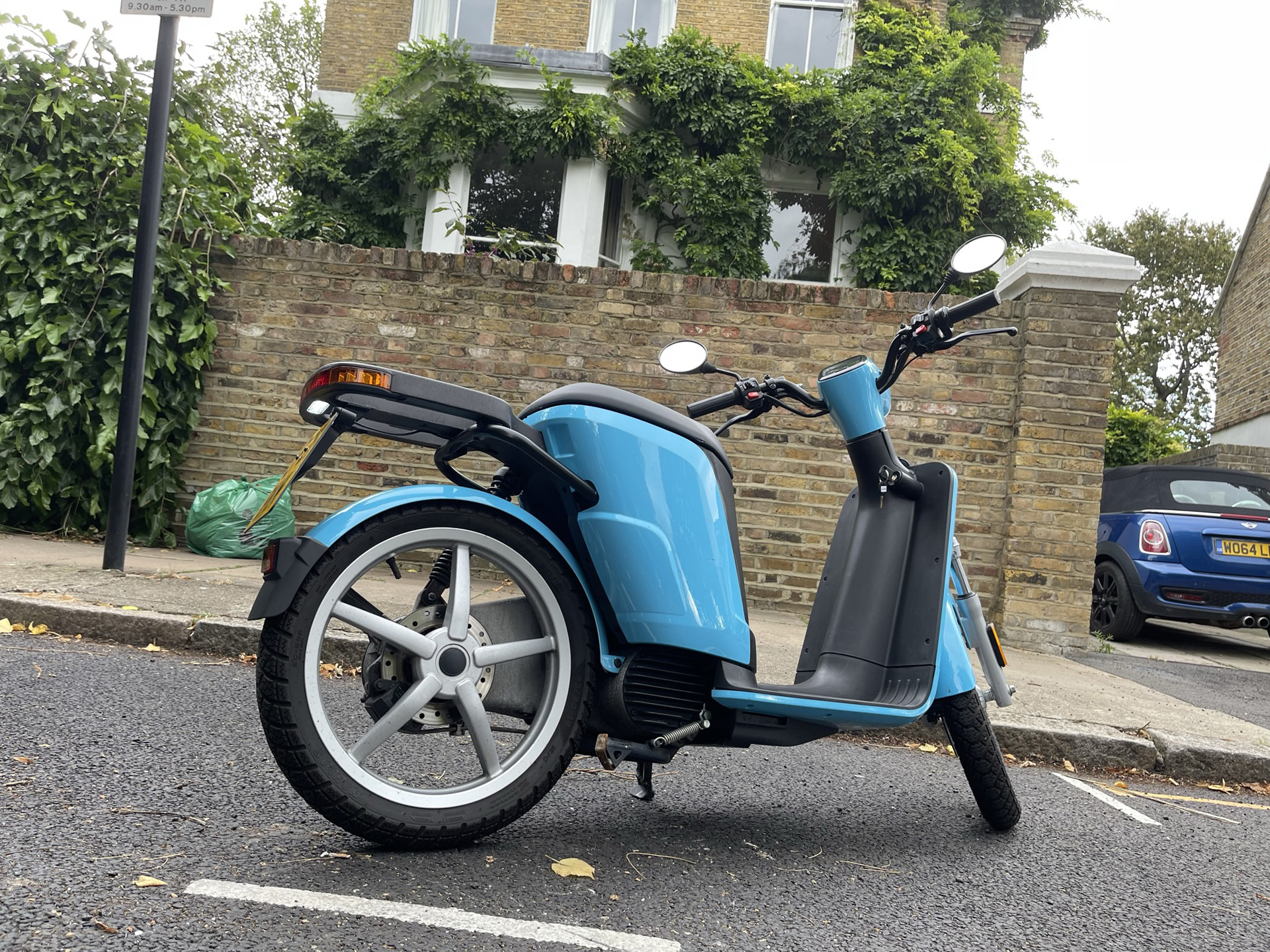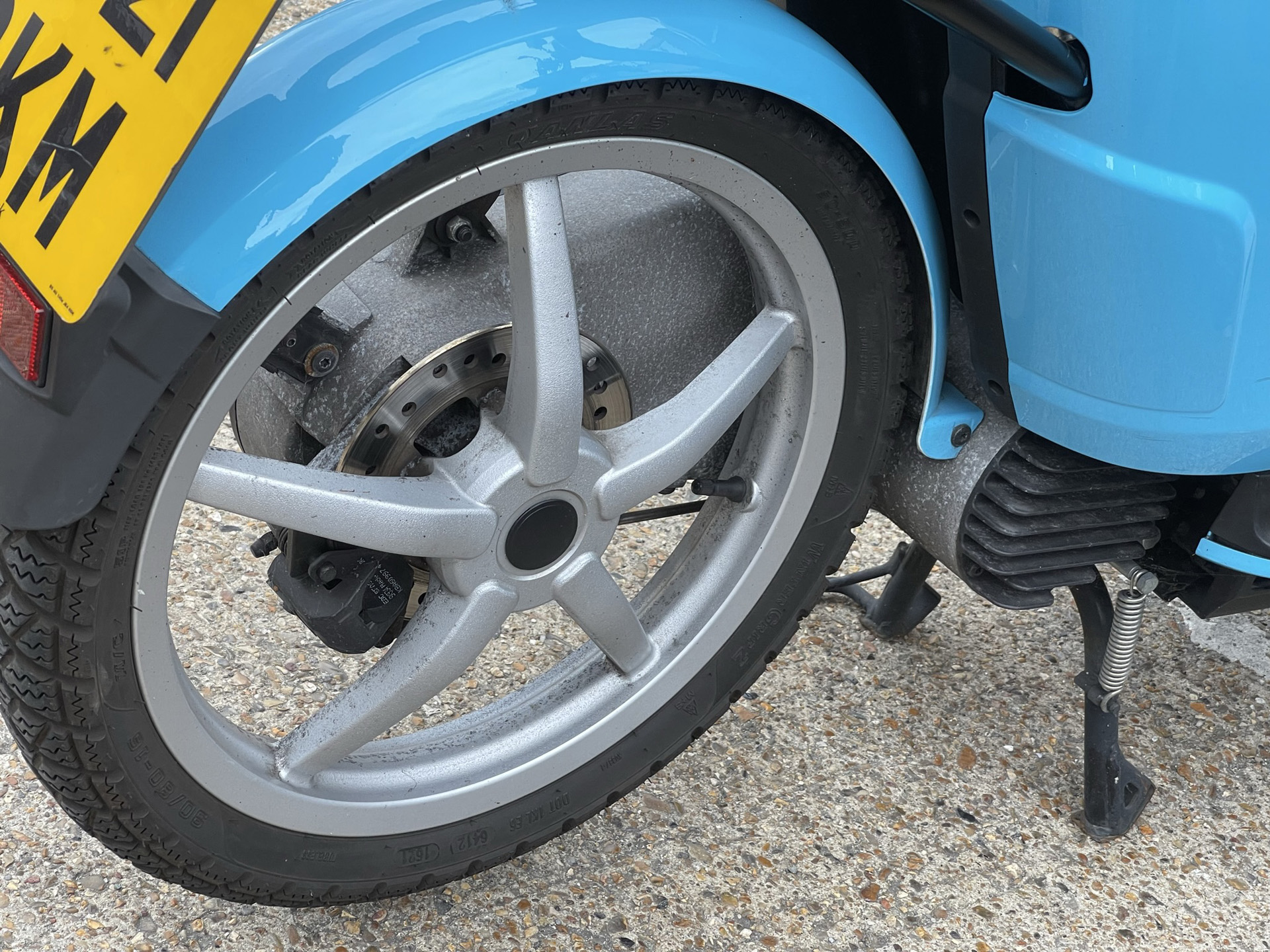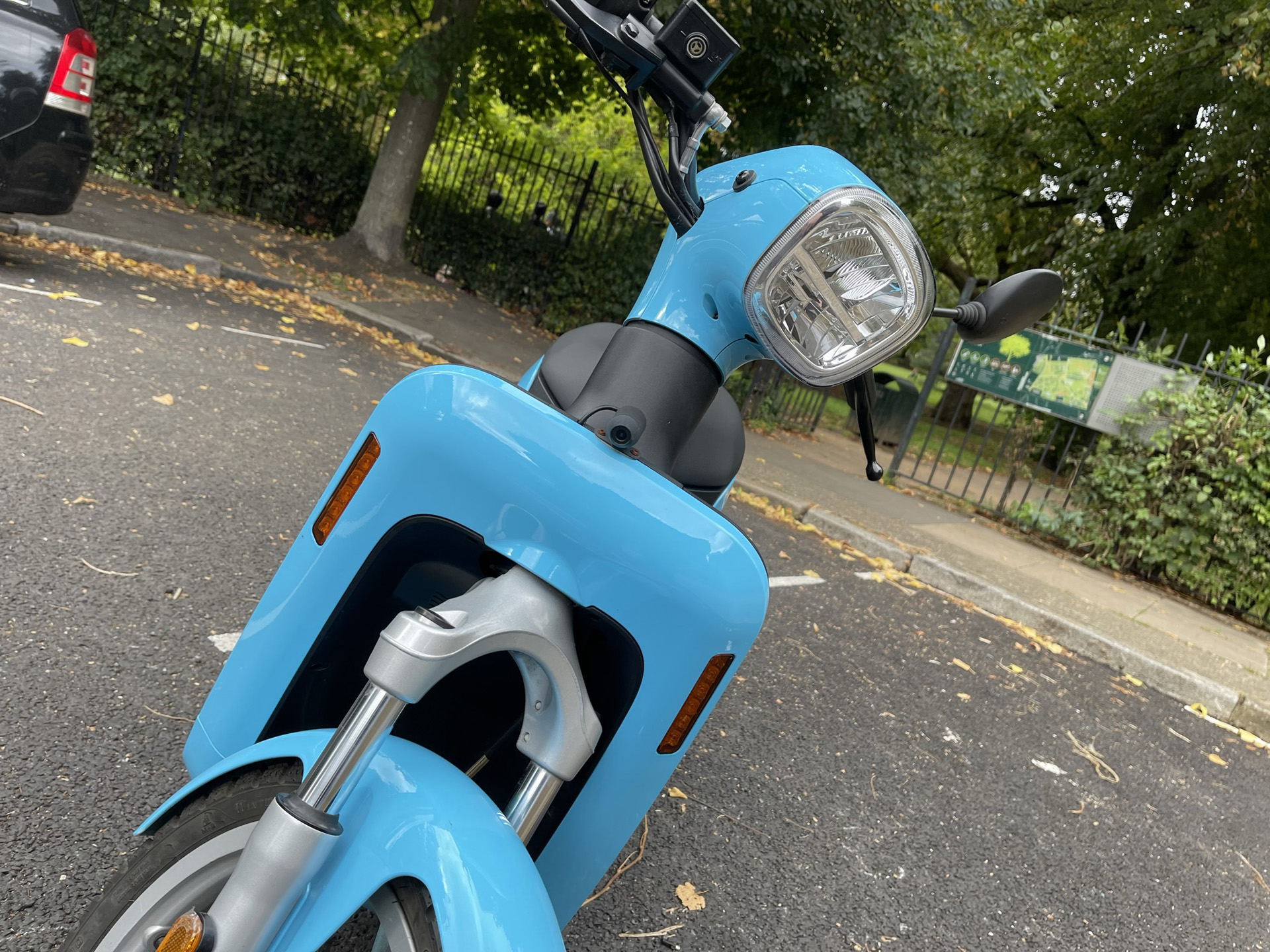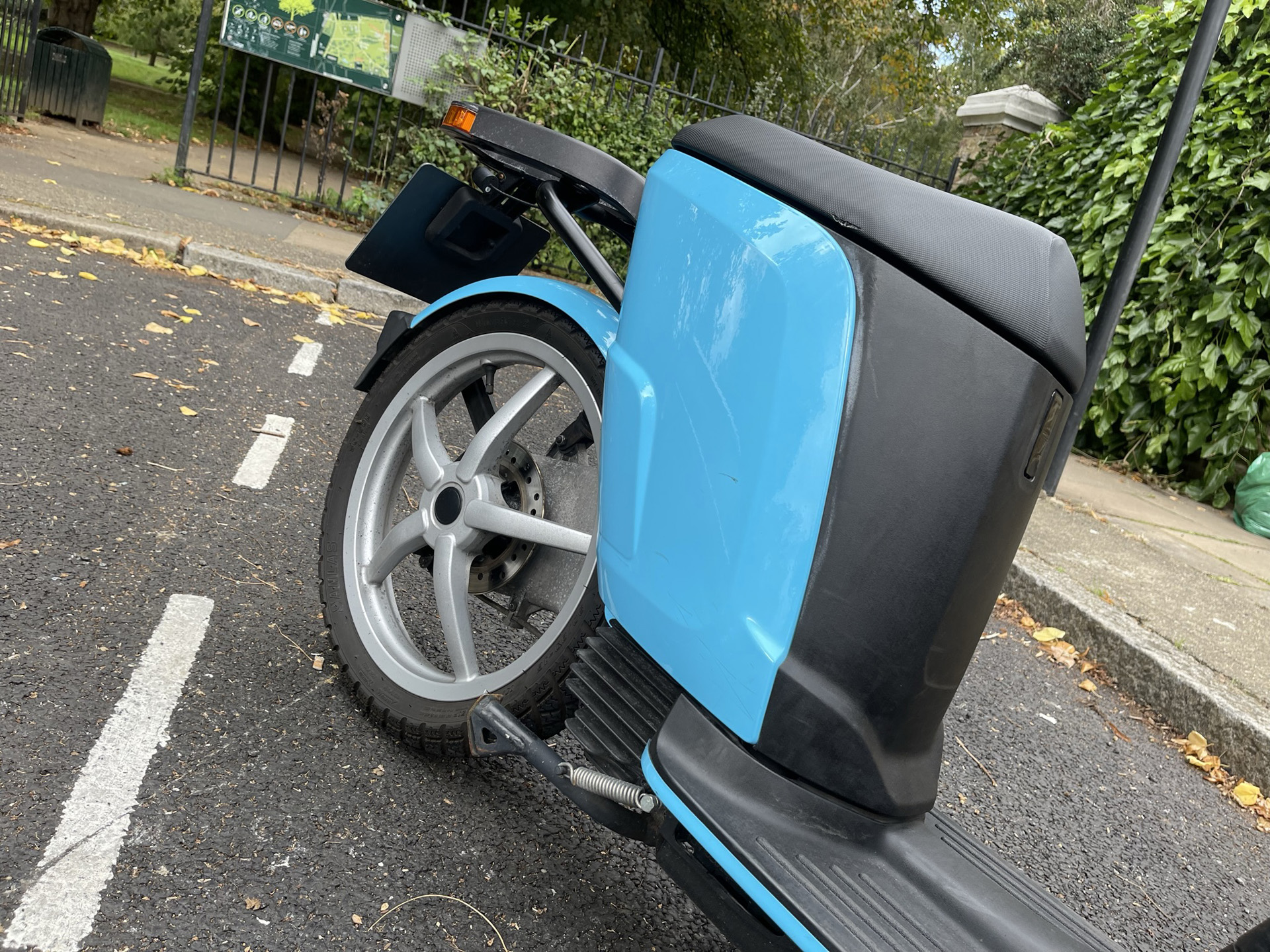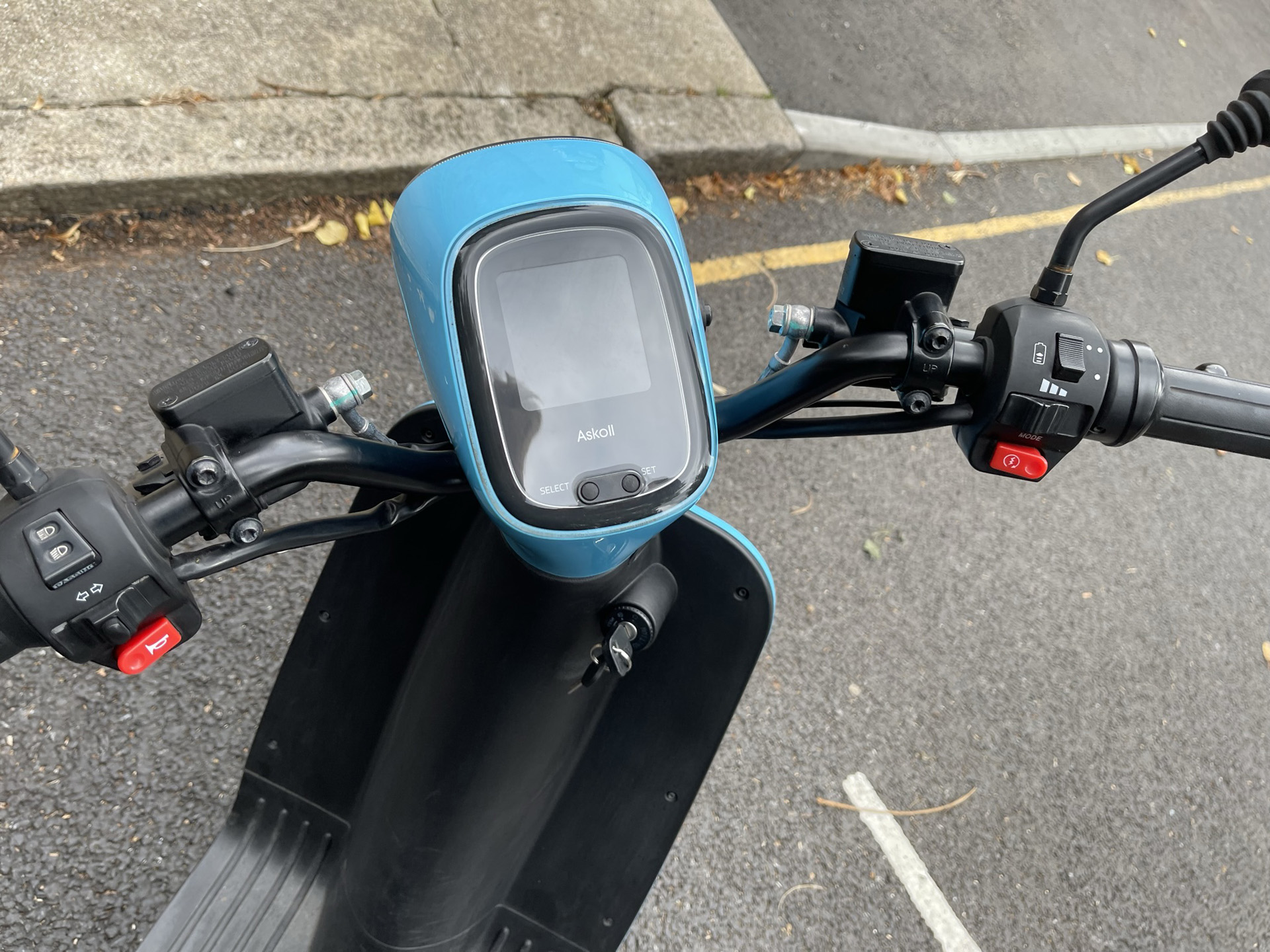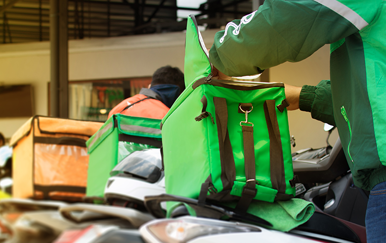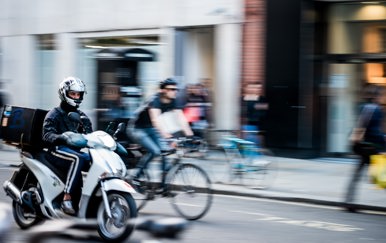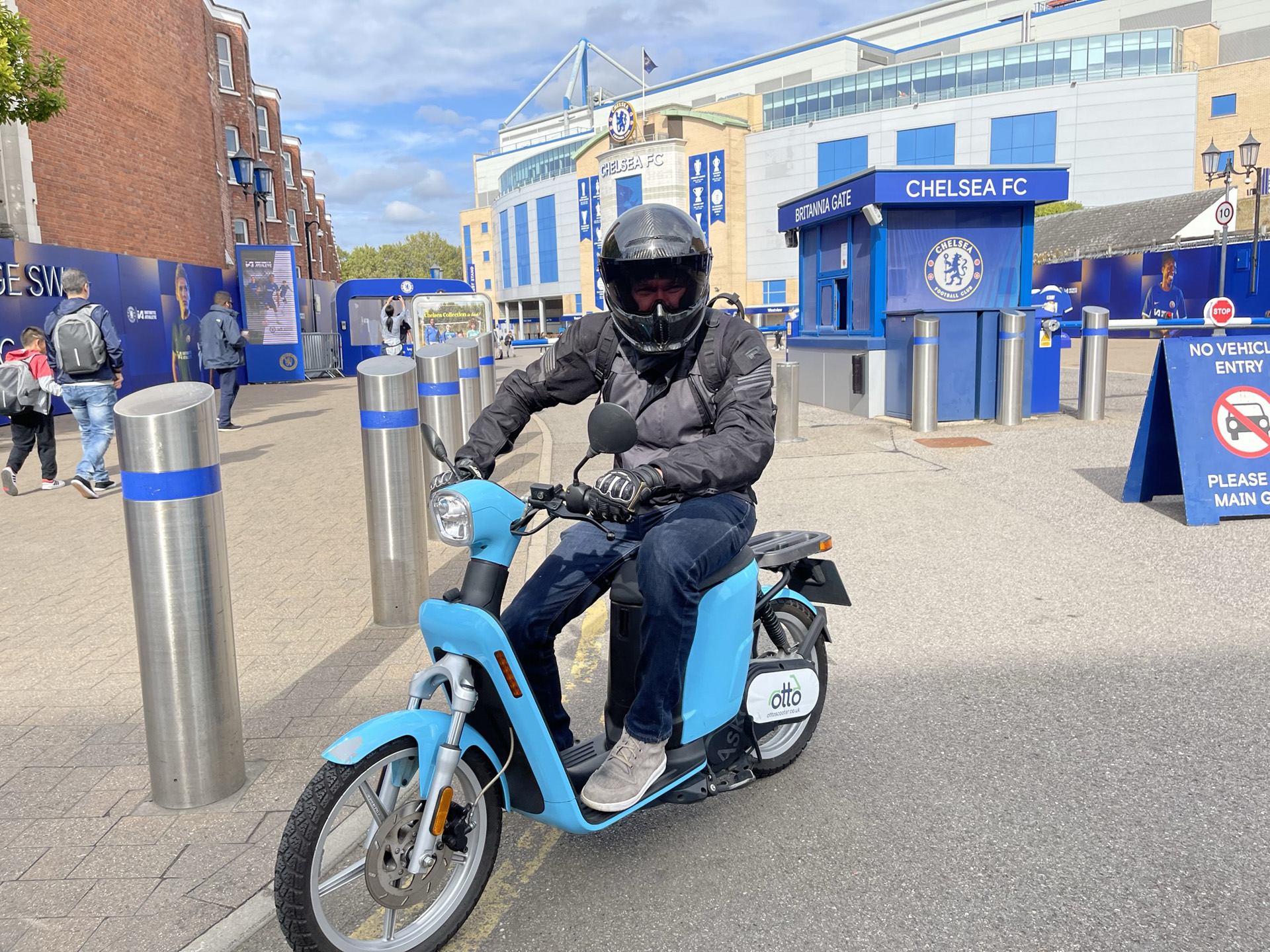
Is this the future go-to option for delivery riders? We head down to Otto Scooter in London to sample an all-Italian electric scooter that is billed as the professional option for couriers and delivery riders, the 125cc(ish) equivalent Askoll eSpro 70.
Electric scooters are becoming increasingly popular options for delivery riders and commuters in towns and cities, and they make a huge amount of sense for navigating the urban jungle - particularly when weighing up the relative shortcomings of their capabilities against what is actually achievable in condensed urban environments, mostly how far you will need to travel, and the speeds you need to reach.
A range nearing 50 miles sounds like next to nothing on paper, and a top speed of 41 mph doesn’t do much to exhilarate, but where most of the roads are limited to 20 mph in London you’ll be lucky to ever need anything more than a 40 mph top-end.
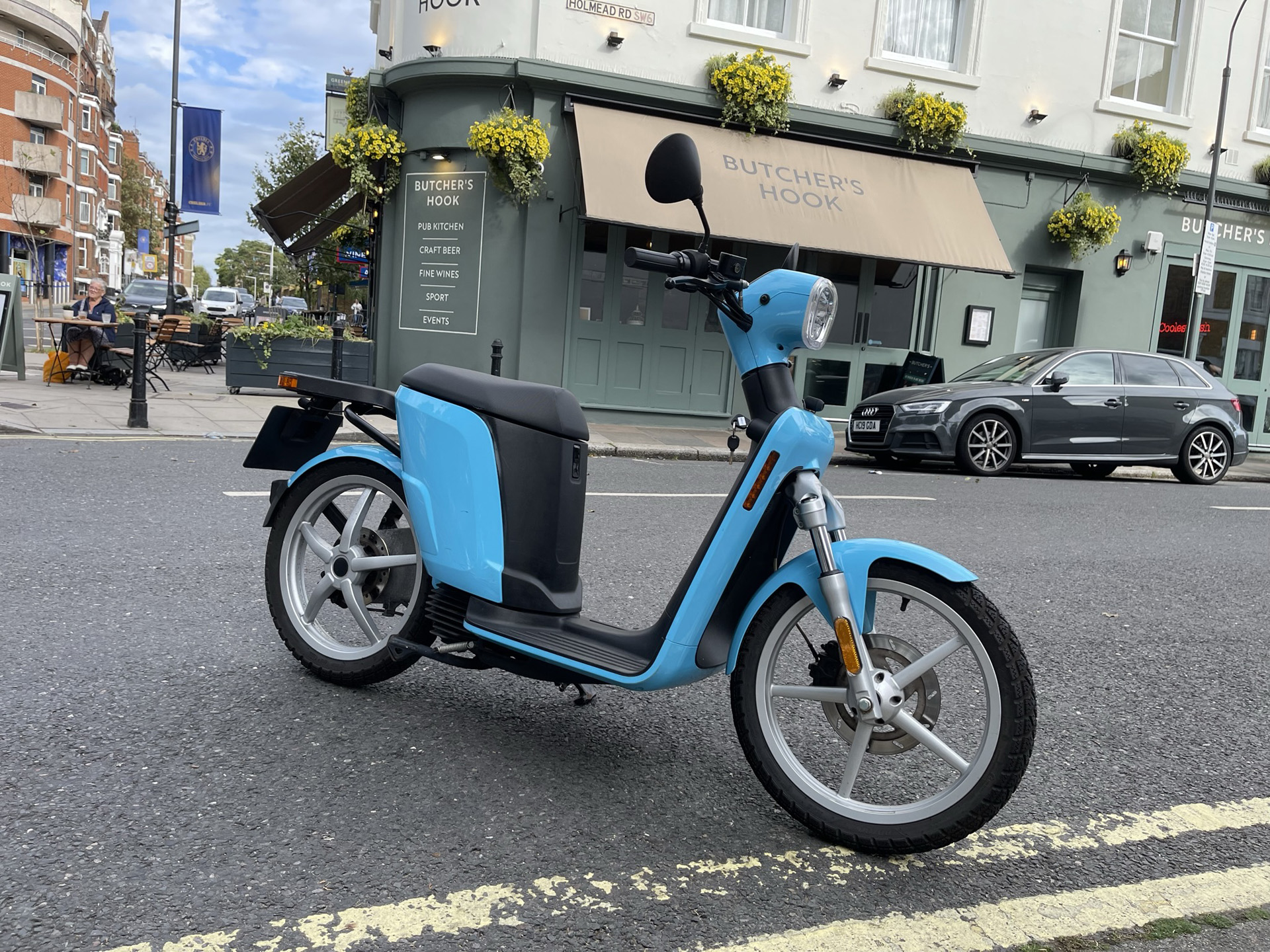
There are a few variants of the Askoll available in 2023, with the eS range complete with 4 ‘Professional’ variants: the eSpro 45, eSpro 70, and the eSpro 45 K and eSpro 70 K which are both given a front luggage rack. There are also the eS2 and eS3 scoots targeted more at the average rider/commuter with a longer seat for a pillion.
So taking the mindset of being a delivery rider for the day, you can get one of these scoots and fit a big top box for delivery use, and away you go making some money whilst generating next to no emissions.
My day in the capital was on the eSpro 70 without any delivery accessories bolted on, totalling around 18 miles of riding - starting out in South Acton at the Otto Scooter HQ, and weaving my way over to the home of the best football team in the world, Chelsea FC and Stamford Bridge.
Askoll eSpro 70 | Good and Bad
Good
- Nimble with low weight.
- Easy to ride.
- Low running costs.
Bad
- High initial purchase price.
- Range anxiety – 50 miles per charge.
- Top speed: 41 mph, restricts use to urban environments only.
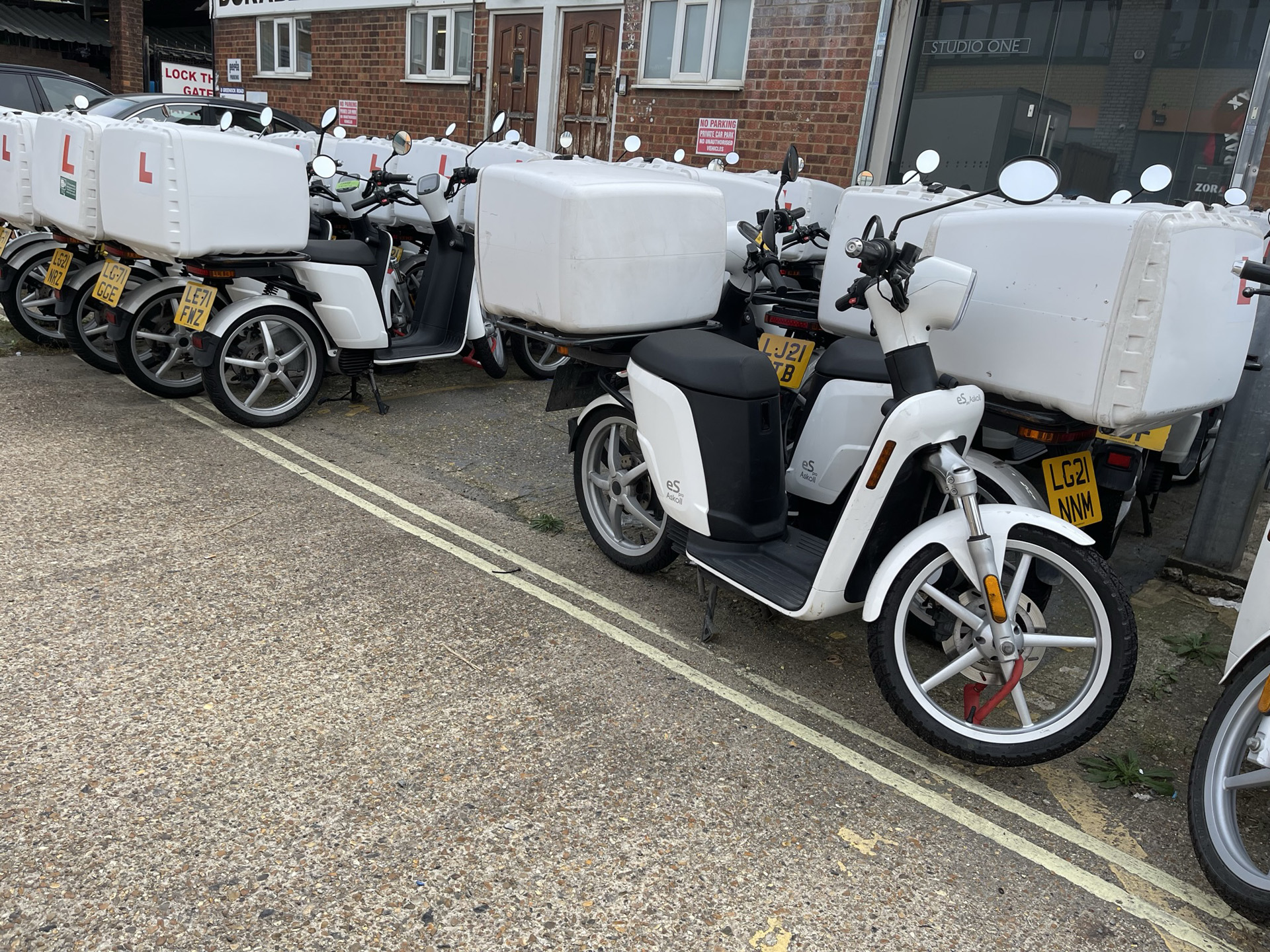
Askoll eSpro 70 Price and Availability
Listed on the official Askoll website, the base price of the Askoll eSpro 70 is €4,989.80 / £4,327.12 – elsewhere it is listed for £4,299, but some sites list the scooter at £3,463. Askoll scooters do come with an astounding 6-year warranty!
The price point is intriguing. If you spec up the scooter on the Askoll site with an additional storage compartment/glovebox, smartphone holder (a delivery essential), and a charging splitter (to charge both batteries at the same time), plus registration (£299) and preparation (£149) you’re looking at a €5,750.60 bill – or £4,985.84.
For comparison, a brand-new Honda PCX 125 is £3,649, and a Yamaha NMAX 125 is £3,777 – and they are the two top-spec best-sellers in the 125cc scootering world, cheaper alternatives are out there. Check our Top 10 125cc Scooters list if you want more alternatives.
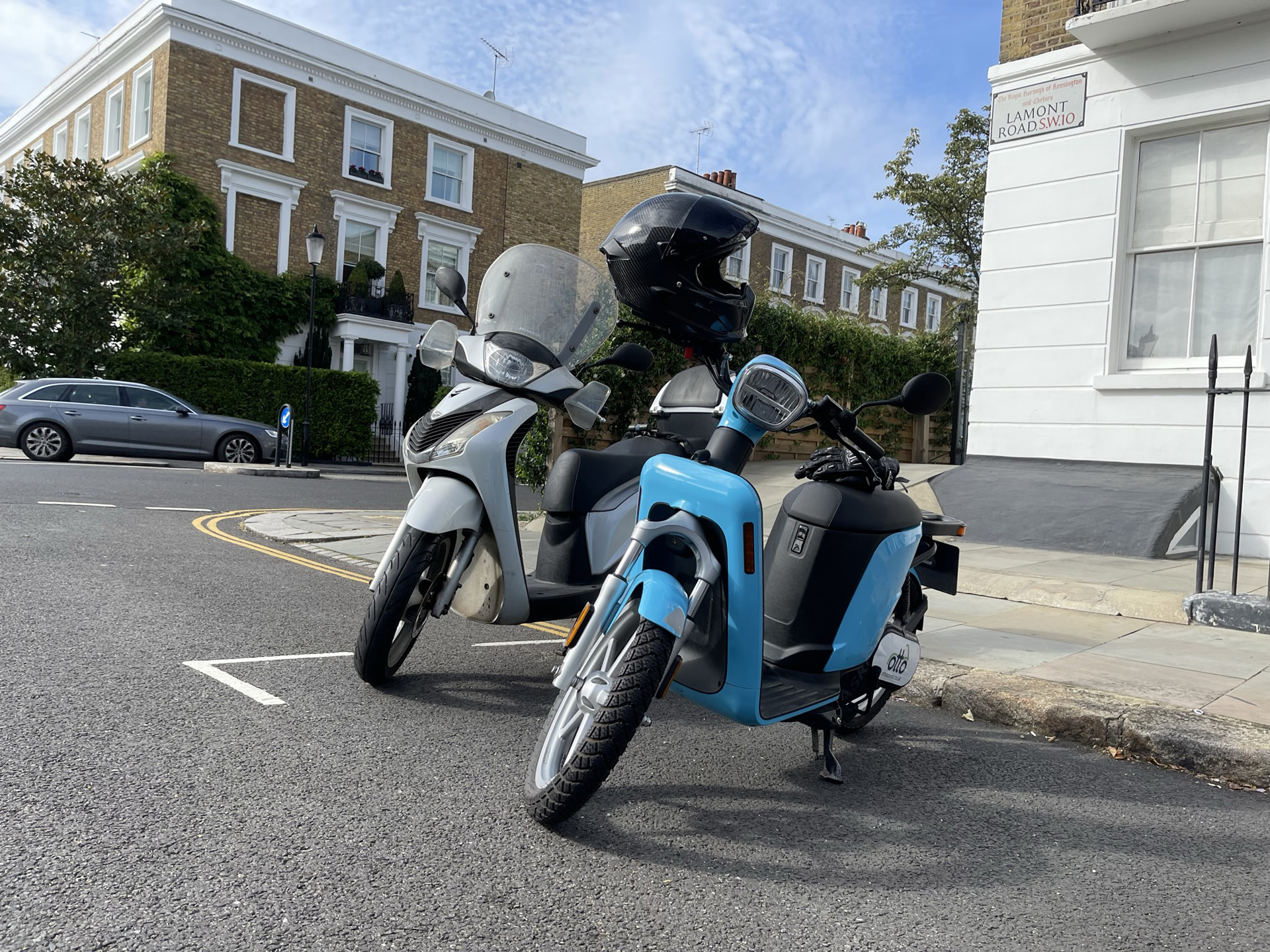
Remember that the Askoll eSpro 70 is eligible for the £500 plug-in grant from the UK Government if you’re thinking of buying the scooter, so deduct that from the final bill – and the low ongoing charging costs and cost of consumable items (just tyres and brakes), you’ll theoretically break even after a few years.
In this case, particularly for delivery riders, Otto Scooter has the options of ‘Rent 2 Buy’ and ‘Short Term Rental’ with both including insurance (with food delivery insurance), free servicing, and free breakdown replacement from £79 per week. Decent options if you’re after a scooter purely for delivery use.
Though the scooter I was riding for the day was a lovely Baby Blue colour, the Askoll site lists either Glossy White or Glossy Black as your colour options.
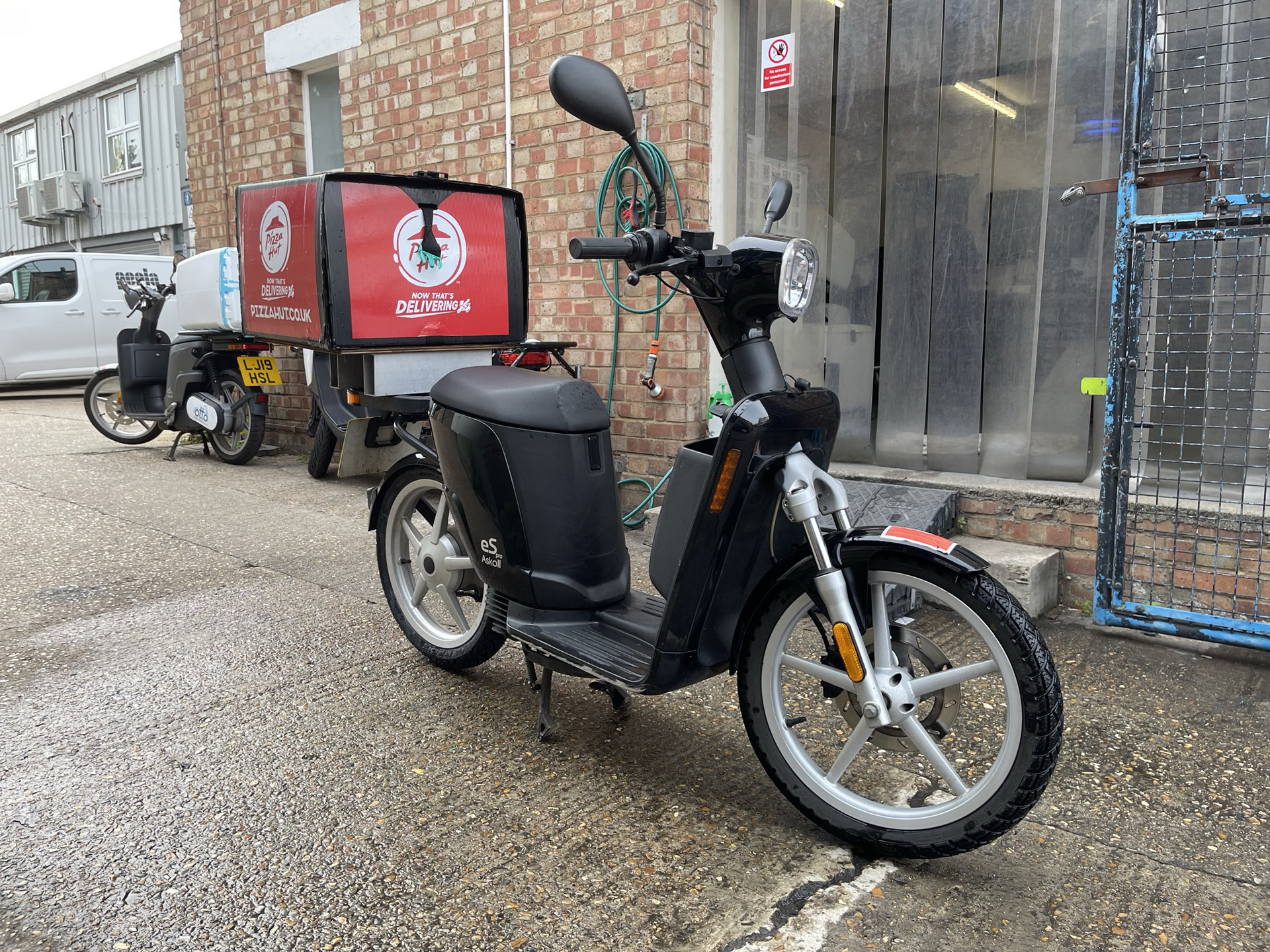
Electric Power | Engine
Power is provided by the Askoll brushless permanent magnet electric motor, with a listed maximum power of 2700 W (both batteries with the same charge level). It’s not a hub-mounted motor, instead, there is a pulley transmission with a toothed timing belt and can be ridden with a CBT or A1 licence. Since it produces zero emissions, it’s also able to freely scoot around with no surcharges (ULEZ specifically).
You can opt to switch on or off the regeneration ability when the scoot is coasting, which could add a little bit of charge to the batteries. When off, the scoot will simply glide along off the throttle – with it on, you notice the tiniest amount of deceleration as the batteries desperately try to grab some energy. It’s hardly noticeable, so you may as well leave it on for the potential few percent of ‘free charge’.
Peak power translates to around 3.6 BHP, and max torque is quoted at 130 Nm to the rear wheel – a truly electric characteristic. I can’t say it really felt like an instant surge of power to the wheel, and off the line it was pretty slow (unfortunately I always lost the traffic light GP).
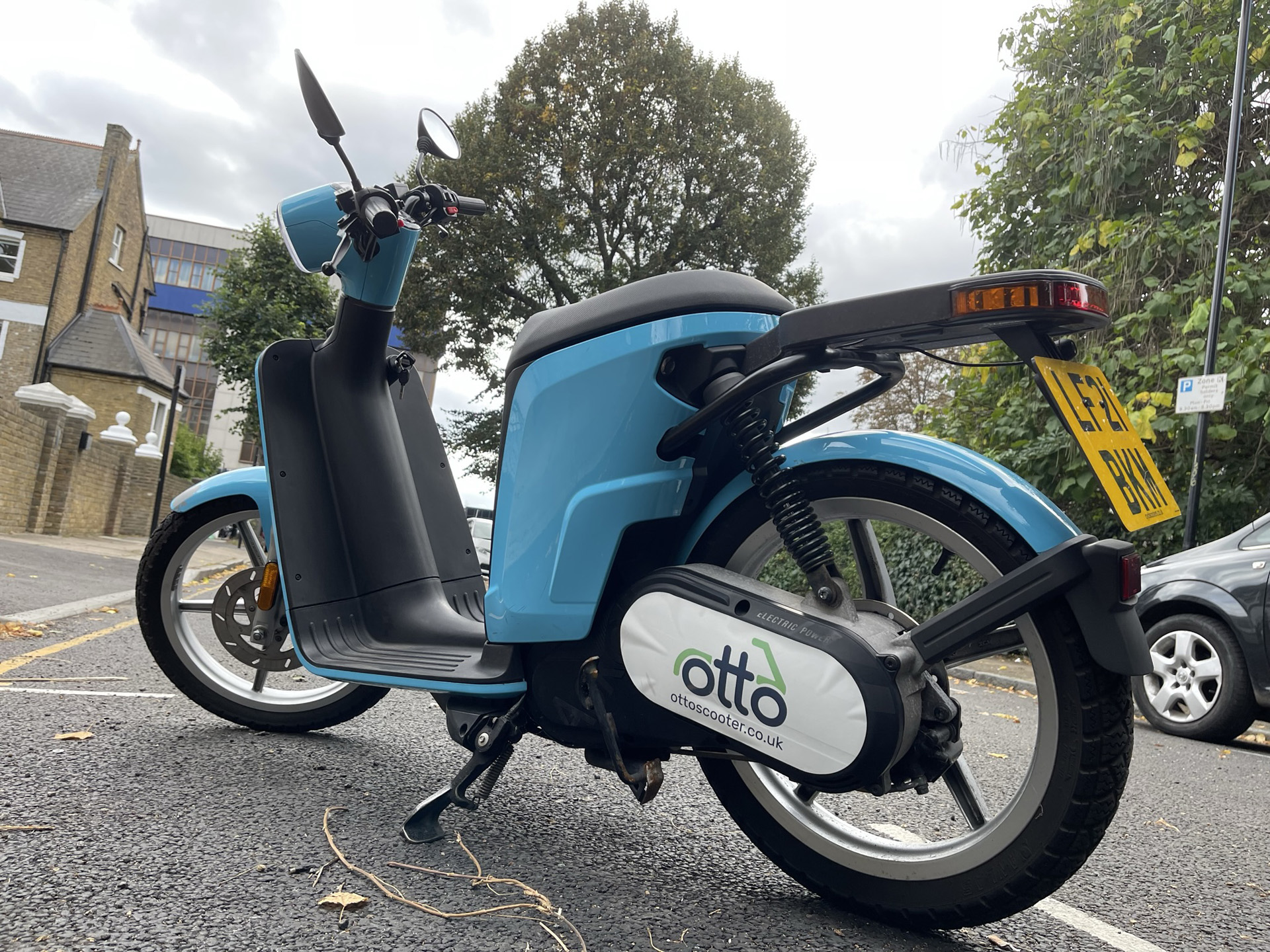
You have three modes to pick from on the scooter, with a selector on the right of the switchgear: Full Power, Medium, and Eco mode. Eco modes caps your top speed at somewhere between 25 and 30 mph and accelerates quite a bit slower, the Full Power ‘sports mode’ will do it all a bit quicker and allow you to reach the top speed of 41 mph given the right stretch of road. Medium power is a sort of best of both worlds.
At full twist (and full tuck for maximum aerodynamic efficiency) I counted 0 to 20 mph in 6 seconds in ‘full power mode’. Despite the huge quoted torque figure, there isn’t quite the matching delivery of power you may expect when twisting the throttle. Though perfectly acceptable for riding around a city, take this to any faster road and you’ll certainly feel extremely vulnerable – in this sense, it isn’t quite the 125cc equivalent, and it firmly places itself as a short-distance urban commuter.
Realistically, on my tour down to Stamford Bridge, I spent most of the time in Eco Mode – purely as the 20 mph speed limits are everywhere in London, and it was nice to know I wouldn’t accidentally find myself rocketing past traffic at max speed. A brief stint on a busy 40 mph road let me spin the wheels up to reach the top speed for a brief period. It got there and held the speed, but you’d likely quickly drain the battery going at maximum velocity for extended periods of time, and it's a bit daunting knowing you're going full tilt on a 70 kg scoot, and have nothing left in reserve at 40 mph.
I was also told that the Askoll scooters don’t enter the dreaded ‘limp mode’ when the battery percentage drops to 20% and below, instead, it’ll just keep working normally as you finish your ride (but find a charge point as soon as possible).
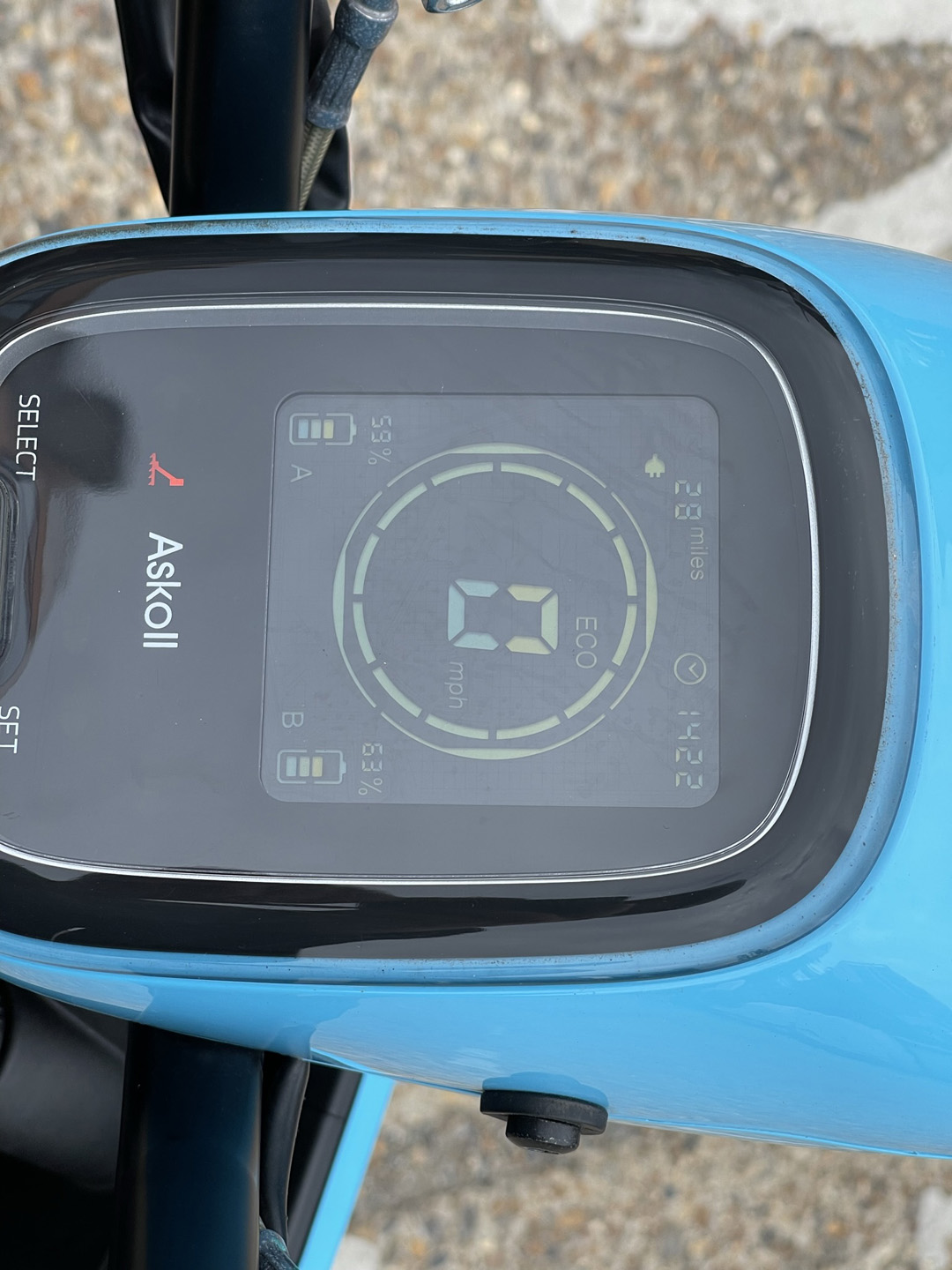
Battery, Range, and Recharging
Seeing as I was only sampling the scooter for the day, my ‘tour of London’ was limited to just under 20 miles – so I can’t comment on the full extent of battery range and recharging further than what I experienced and what is quoted by Askoll themselves.
You have two removable batteries that slot into place under the seat, both Lithium-ion with a maximum capacity of 2820 Wh. Voltage is 54 V or 26.1 Ah per battery, and they weigh in at 8.1 kg each.
With both batteries fully charged, the range is quoted at up to 96 km, or just under 60 miles. Charging time is quoted by Askoll at about 6 to 7.5 hours from 0% to 80% (both times quoted on the site) so certainly an overnight charge between rides. On charging, you can choose to remove the batteries to charge them inside, or plug the scooter in and charge up directly inside the scooter.
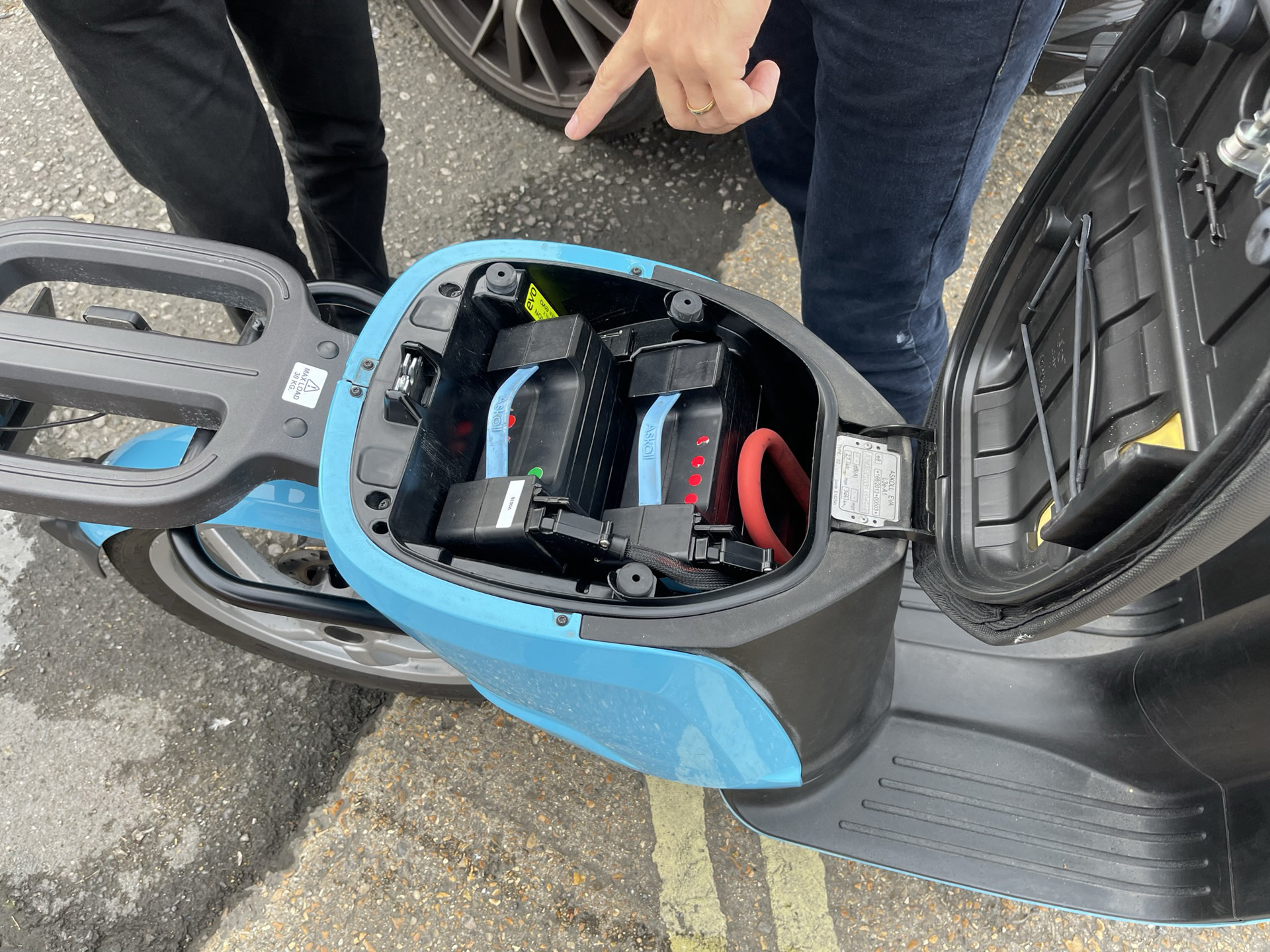
You can opt to purchase a splitter for around £155 which can charge both batteries from the plug remotely, though the charge time will increase. When running the scooter, the batteries discharge in series (so the discharge rate is equal) and you’re best off running the scoot with both batteries at the same charge level.
Your range is given in real-time on the LCD dash, and upon jumping on the scooter with two fresh batteries it is estimated you'll get 50 miles of riding in Eco mode, or 35 miles in full power mode. The guys at Otto assured me that it updates as you ride, predicting how far it’ll be able to go based on how throttle-happy you are. Smooth and gentle, and you should be able to get the full 50 miles depending on rider & cargo weight, and if it's cold or warm outside (battery discharge amount varies at different temperatures).
At the end of my 18.3-mile ride, battery A had depleted to 59%, battery B to 63%, with the estimated range remaining 20 miles in full power, 22 miles in ‘middle power’, and 28 miles in eco mode. Given those figures, it seems I was on course for the full estimated range.
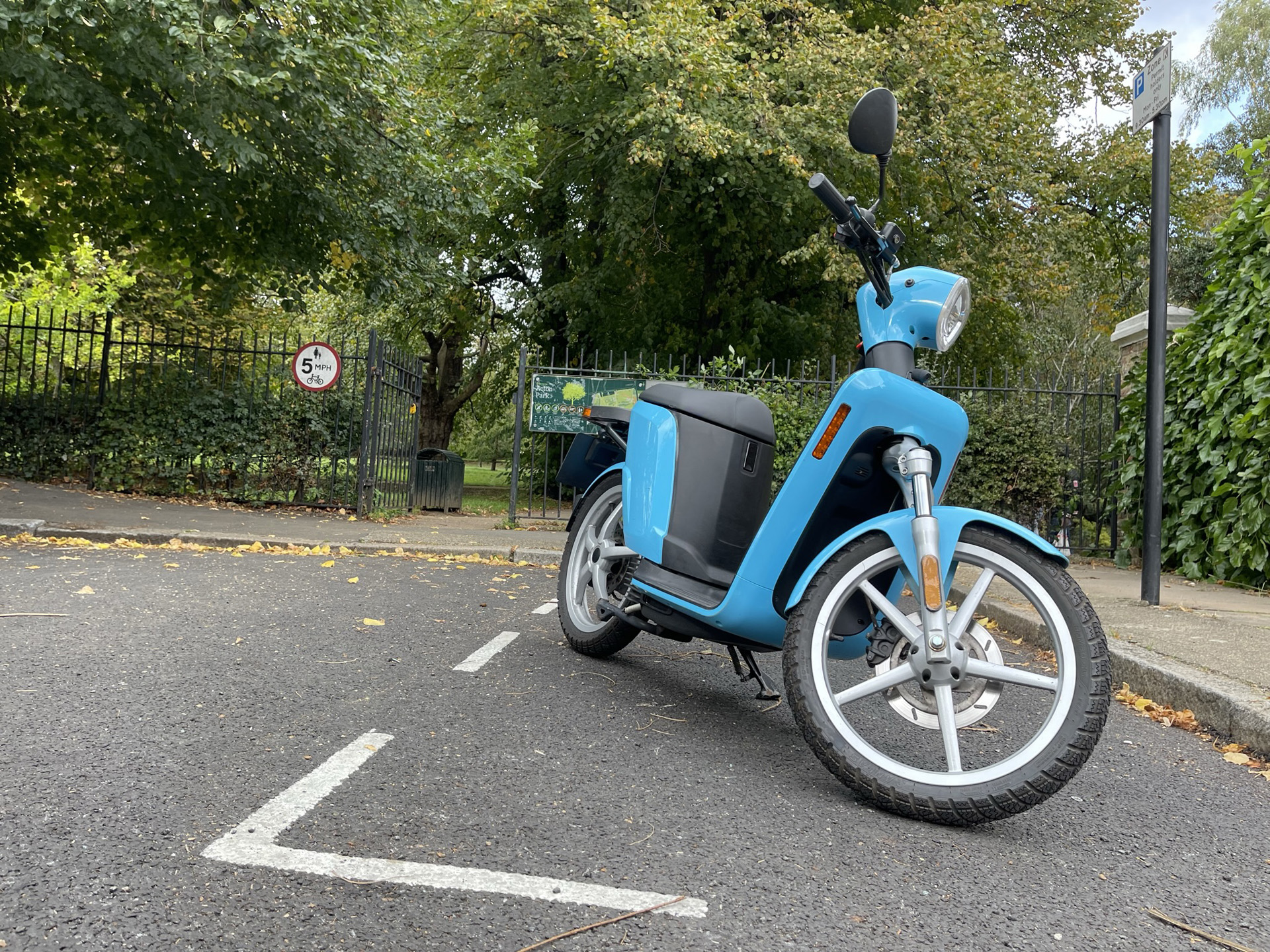
Askoll eSpro 70 Features | Delivery Rider’s Dream?
These scooters are designed specifically for delivery riders, so let’s cover some of the features of the eSpro 70 with that in mind.
I noticed quite soon after setting off that when you’re stationary the eSpro 70 will emit a couple of light beeps, and the indicator will make a noise when on too. It’s entirely noiseless other than the gentle whirr of the motor at speed.
One thing this can do very well is its handling. The turning circle is outrageous, the wheelbase is a tiny 1245 mm and at full lock left/right you can easily pull a U-turn in roughly the width of a car parking space. Seeing as it’s so light and small (86kg in running order) manoeuvring the scoot into confined spaces is of no concern, squeeze past traffic and get to the front of the queue. This may change slightly with a full-sized delivery box on the back, but the foundations are there.
On that, the maximum weight the scooter can take is listed as 245 kg (scooter + drive + additional load), with the maximum rear load listed as 30 kg. Seat height is an accessible 760 mm, and seeing as it’s a step-through scooter with very low weight, I’d say every rider can happily get around on this.
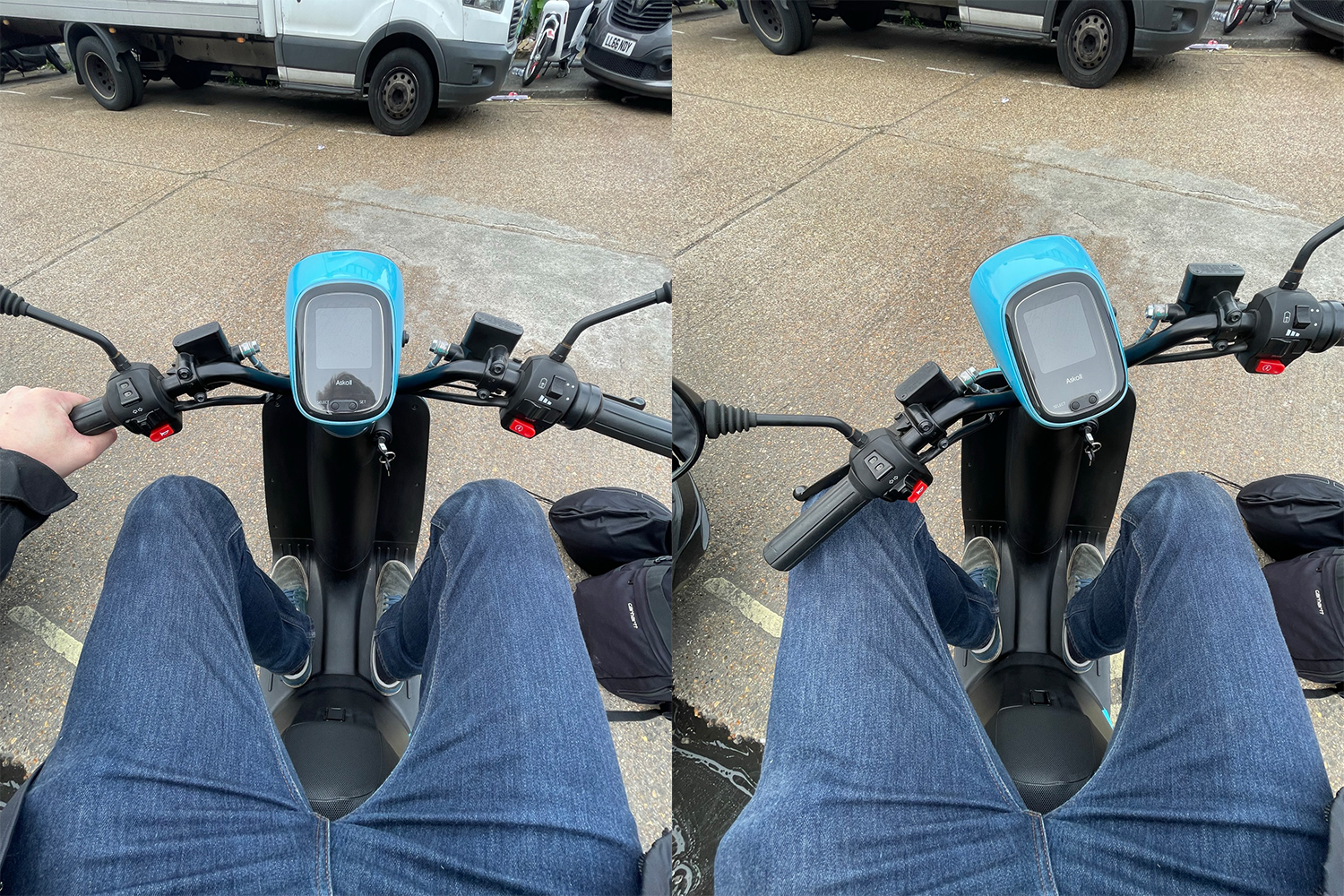
Telescopic forks up front with a rear shock absorber provide somewhat of a firm ride, though perfectly fine for city riding at low speed, and your braking power comes in the form of a 220mm disc at the front, linked to a 140mm drum brake at the rear (with a Combined Braking System). You have 16 inch wheels front and rear.
The LCD dash is really simple, mph in the middle, individual battery percentages on the bottom left and right, current time on the top right, and top left switches through trip, estimated range, and odometer with the select button.
Due to the tiny overall size, if you’re tall the bars may tap your knees when on the move. Dangle a leg like Rossi, or simply keep it in mind when turning sharply – I didn’t find any issues when riding and navigating traffic, though I did feel absolutely huge sat on it.
The guys at Otto Scooter also pointed out that thanks to the motor not being rear hub mounted (as many scooters opt for), removing the rear wheel is quick and easy, so tyre changes in the case of a flat is no hassle at all. They also fit cameras to the front and rear of their hire scooters, so in the case of an accident, they have footage to back the claim – a nice touch.
The rear rack on the eSpro 70 comes as standard, and can be used as the base for mounting a bigger top box, should you wish – storage as standard is minimal. You can add the glovebox, but under the seat there is space for the charger cable and batteries (you could ride without the cable and keep something in that space).
Askoll eSpro 70 | Verdict
The Askoll eSpro 70 is a very straightforward, easy-to-ride scooter. It’s basic and simple in its design and style, and with the required bits on (box, smartphone holder etc) it’ll serve very well as a short-distance delivery scooter. The only main drawbacks are the initial purchase price and lacklustre top-end power, realistically confining this scooter to the urban sprawl of towns and cities.
The option to hire one from Otto Scooter as a purely delivery vehicle makes a lot of sense, particularly as the delivery insurance is included in the weekly fee of £79, but those strictly after a commuter may want to opt for a combustion engine scoot which will be cheaper to buy, have more power at your disposal, and far more range.
So is this better than a 125cc equivalent combustion engine scooter? I’d argue it’s an alternative option, the Askoll eSpro 70 doesn’t pretend it’s better than the established competition on the market today but provides an economical option that will do the job.
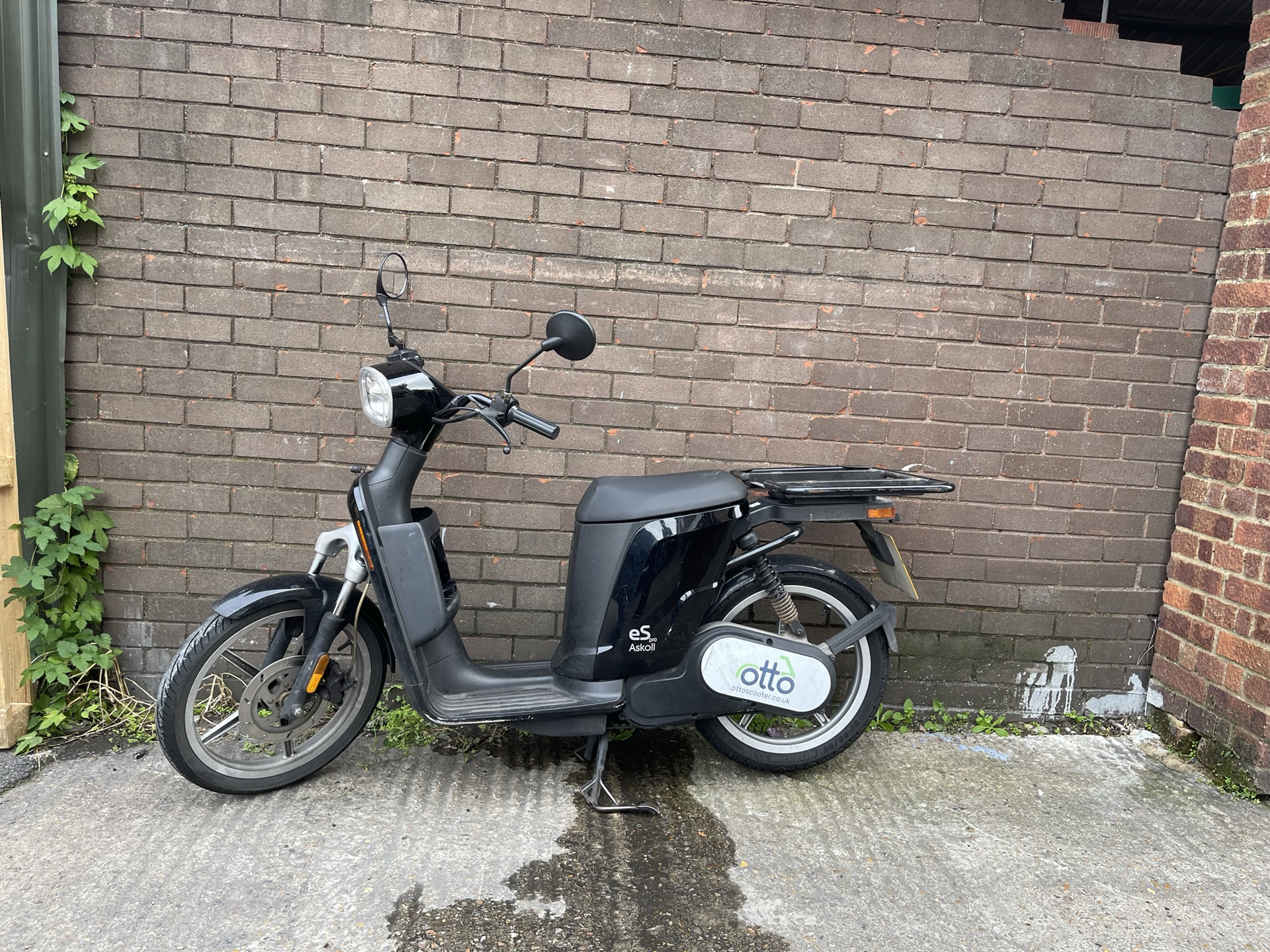
If you decide to go for an electric scooter like this, you have to weigh up the pros and cons. Consider the charge time (and planning your route up to a maximum of 40 miles with a 10-mile safety buffer in this case), the initial purchase price, and restrictive top speed. It’s the same story with every electric scooter and motorcycle, range anxiety and recharging are the big considerations here – even if electric power is ‘better for the environment’.
What it does well is handle with extreme agility, can carry quite a large amount considering the size, and provide that door-to-door ride with next to no running costs. For delivery riders, having the ability to get around the city/town with a scooter that’s nimble and has little to no upkeep is a positive draw.
Beating the cheaper petrol-powered scooters will certainly be a struggle, simply as they are so effective in the same urban environment - petrol may be expensive, but a typical Honda PCX 125 can get up to 134 mpg and a maximum of 200 miles covered per fill-up.
Big thanks to Otto Scooter for letting me take the eSpro 70 around London for the day!
If you're looking for delivery rider insurance, you can contact Lexham Insurance directly for a quote.
